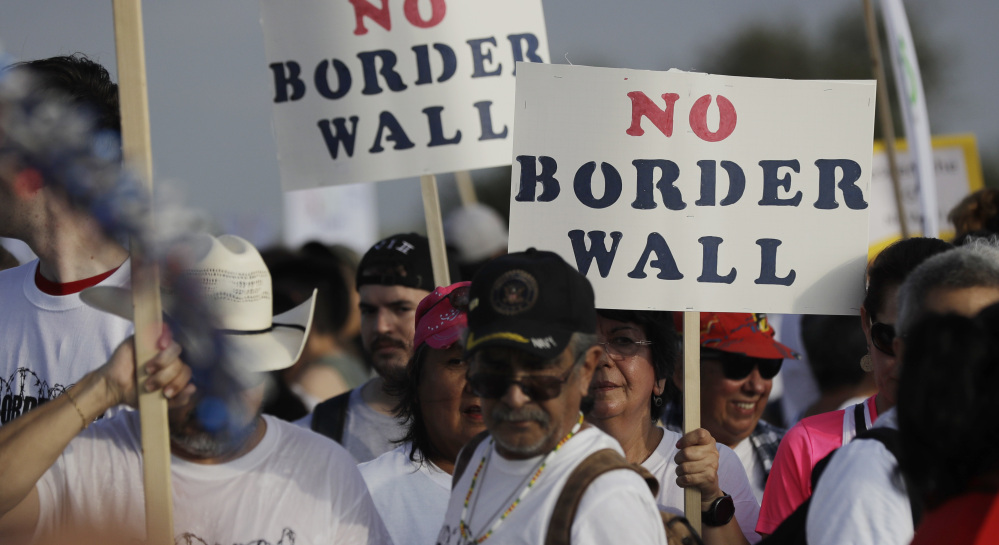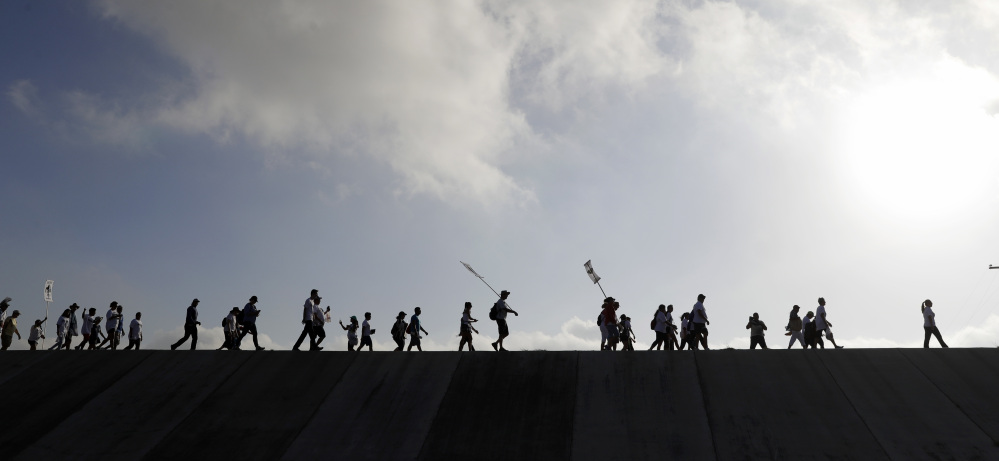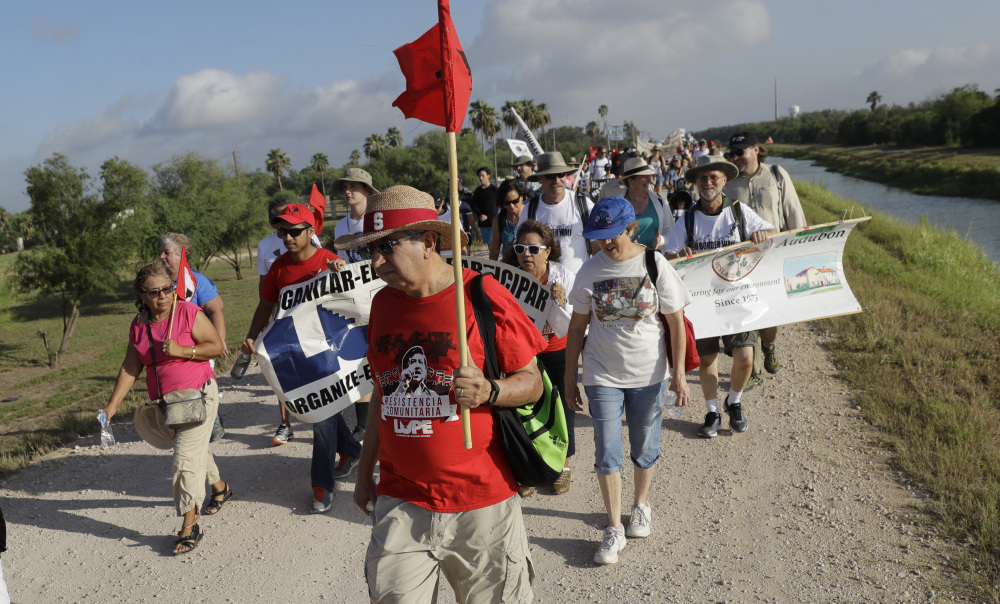MISSION, Texas — Hundreds of protesters wearing white and chanting in English and Spanish marched Saturday in Texas’ first major protest against a border wall, crossing the earthen Rio Grande levee where President Trump’s administration wants to build part of the first phase.
The protesters launched what’s expected to be a fierce movement against Trump’s best-known immigration policy priority. Many of the participants acknowledged they might not be able to stop a project that the U.S. government is already planning, but they hoped to draw national attention to the cause and persuade lawmakers who have yet to sign off on funding for the project.
“We might seem small and insignificant. Maybe we are,” said Anthoney Saenz, a 19-year-old native of the Rio Grande Valley, the southernmost point of Texas and a region where Trump has proposed putting 60 miles of wall as part of a $1.6 billion proposal. “But when our voices come together, when we band together as a community to try to get a voice out there, we have to hope we get heard.”
Organizers of Saturday’s protest wanted to make clear the depth of local opposition to the border wall, which as proposed would cut through a federally protected wildlife refuge and split apart several border towns. Some 40 groups took part in the protest, from environmentalists to landowners’ rights groups to immigrant advocates.
The procession set out just after dawn from Our Lady of Guadalupe, a towering church in the border city of Mission. Saenz, an altar server at Our Lady of Guadalupe, led the group wearing a white cassock and carrying a burner with smoky incense.
The procession grew as it headed south toward the Rio Grande, the winding river that separates the United States and Mexico in Texas. The marchers walked uphill on a dirt path onto the levees, built well north of the river to protect border cities in the valley from flooding.
The march ended at La Lomita, a tiny century-old chapel just south of the levee. Some people quietly prayed inside the chapel as a rally went on outside.
While the U.S. House has passed a spending bill with funding for the wall, it faces an uncertain future in the Senate, where Democrats and some Republicans have spoken against it.
Government contractors have already been taking soil samples along the Rio Grande levees and have begun to examine property ownership records for the land condemnation lawsuits a border wall would likely require, according to local officials and landowners near the river. A map released by U.S. Customs and Border Protection shows tentative plans to build 28 miles of wall on the levee in Hidalgo County, the most populous county of the valley. Sections of fencing already stand on about 20 miles of the levee in Hidalgo County, built under the Secure Fence Act of 2006. The remaining 32 miles would go in sections farther west in Starr County.
Send questions/comments to the editors.





Success. Please wait for the page to reload. If the page does not reload within 5 seconds, please refresh the page.
Enter your email and password to access comments.
Hi, to comment on stories you must . This profile is in addition to your subscription and website login.
Already have a commenting profile? .
Invalid username/password.
Please check your email to confirm and complete your registration.
Only subscribers are eligible to post comments. Please subscribe or login first for digital access. Here’s why.
Use the form below to reset your password. When you've submitted your account email, we will send an email with a reset code.